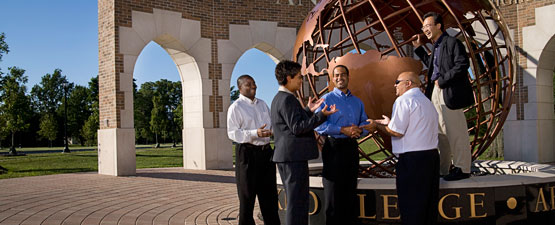Professional Dissertations DMin
Date of Award
1996
Document Type
Project Report
Degree Name
Doctor of Ministry
College
Seventh-day Adventist Theological Seminary
Program
Doctor of Ministry DMin
First Advisor
Randall W. Younker
Second Advisor
David Merling
Third Advisor
Kenneth Stout
Abstract
Problem. Recent studies of the Seventh-day Adventist church have revealed that there are several large segments of society in the United States that are not present in the church in large numbers. Among them are groups of people who have attained high socioeconomic levels and above average educational levels. Many of the people who live in the Chestnut Hill section of the city of Philadelphia, Pennsylvania, are in these groups. Traditional Adventist evangelistic methods have not attracted them. This project sought to develop an archaeologically based evangelistic approach that would attract people with similar characteristics.
Method. A series of twenty lectures, entitled "Archaeology, the Ancient World, and the Bible," was developed and held in Chestnut Hill, Pennsylvania, a largecity setting. In addition, a pastoral move enabled the same series to be held in Mount Vernon, Ohio, a small-town setting. Participant questionnaires were completed by 348 community attendees and the responses were analyzed to determine the attendees' characteristics.
Results. The targeted people groups in Chestnut Hill, who have attained high socioeconomic and educational levels, indeed attended the lecture series. Responses suggested that many would not have been attracted by prophetically based meetings. In spite of having opposite demographics, many attendees in Mount Vernon were also from higher socioeconomic and educational levels. Yet, the Mount Vernon series also attracted many who were less wealthy and educated.
Conclusions. Evidence from the presentation of this series in two dissimilar locations suggests that archaeologically based evangelism will attract people from a broad spectrum. However, people from the higher socioeconomic and educational levels seem to be attracted more by archaeologically based evangelism than prophetically based evangelism. Solid evangelistic programming can be produced that remains archaeologically based throughout the whole series rather than using archaeology in a few meetings— incidentally— in a prophetically based series as has been common in traditional Adventist evangelism. Archaeology can be integrated into evangelism to build confidence in the Bible, illuminate the customs and culture of biblical times, and provide examples from biblical stories that can be applied to modern-day living.
Subject Area
Evangelistic work--Seventh-day Adventists
Recommended Citation
Zollman, Franke Jon, "Archaeology, the Ancient World, and the Bible: an Integrated Evangelistic Approach" (1996). Professional Dissertations DMin. 149.
https://dx.doi.org/10.32597/dmin/149/
https://digitalcommons.andrews.edu/dmin/149
Creative Commons License

This work is licensed under a Creative Commons Attribution-No Derivative Works 4.0 International License.
DOI
https://dx.doi.org/10.32597/dmin/149/
Files over 3MB may be slow to open. For best results, right-click and select "save as..."



